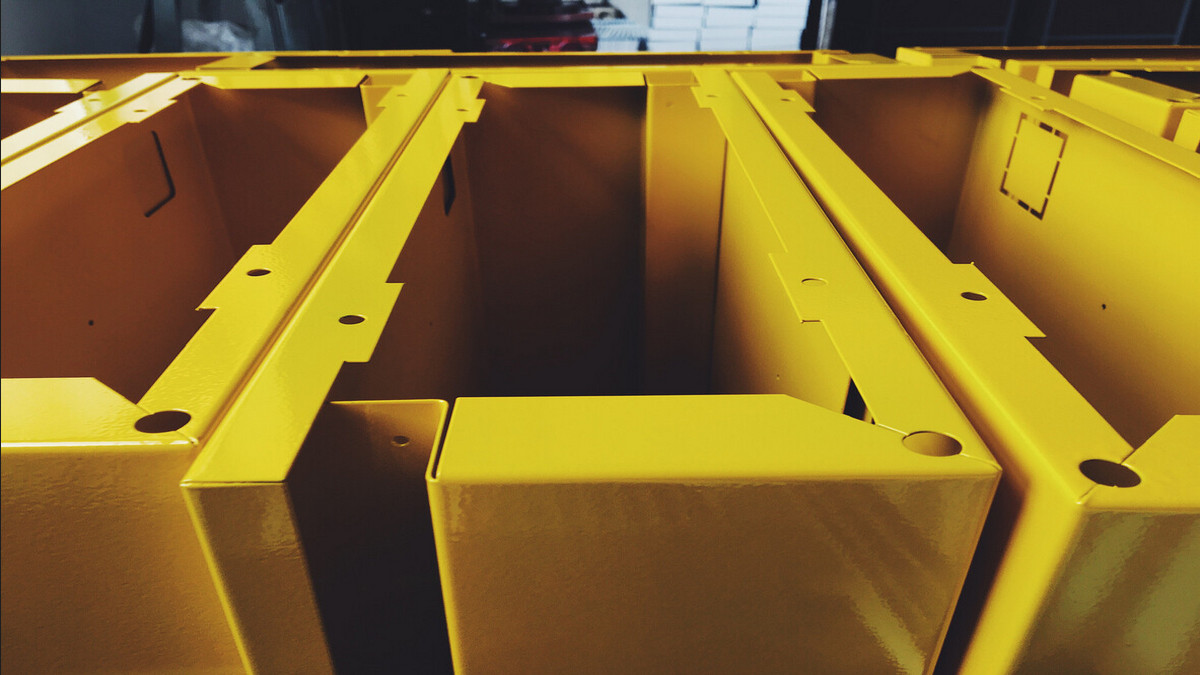The metal surface is easy to rust and corrode in the natural state, which will cause excessive loss of metal products. At the same time, in order to meet the functional requirements of metal products such as brightness, wear resistance, and aesthetics, the coating on the metal surface plays a very important role. Surface treatment can improve product appearance, texture, function and other aspects of performance.
Surface treatment is to form a surface layer of one or more special properties on the surface of the material by physical or chemical methods. Through surface treatment, the appearance, texture, function and other properties of the product can be improved. General metal surface treatments include: anodizing, electrophoresis, micro-arc oxidation, PVD vacuum plating, electroplating, powder coating, metal wire drawing, alloy catalytic liquid technology, and etc.
Anodizing
It is mainly the anodic oxidation of aluminum, which uses the principle of electrochemistry to form a layer of Al2O3 (aluminum oxide) film on the surface of aluminum and aluminum alloys. This layer of oxide film has special properties such as protection, decoration, insulation and wear resistance.
Technical Features:
- Increase the strength.
- Realize any color except white.
- To achieve nickel-free sealing, to meet the requirements of Europe, the United States and other countries for nickel-free.
Technical difficulties and key points for improvement:
The yield level of anodization is related to the cost of the final product. The key to improving the oxidation yield is the appropriate amount of oxidant, appropriate temperature and current density. This requires structural component manufacturers to continuously explore and seek breakthroughs in the production process.
Electrophoresis
It is used for stainless steel, aluminum alloy, etc., it can make the product show various colors, maintain the metallic luster, and at the same time enhance the surface performance, with good anti-corrosion performance.
Shortcoming:
The ability to cover defects is general, and the electrophoresis of die castings requires higher pretreatment.
Micro Arc Oxidation (MAO)
The process of applying a high voltage in an electrolyte solution (usually a weak alkaline solution) to generate a ceramicized surface film layer, which is the result of the synergistic effect of physical discharge and electrochemical oxidation.
Advantage:
- Ceramic texture, dull appearance, no high-gloss products, delicate hand feeling, anti-fingerprint;
- Wide range of substrates: Al, Ti, Zn, Zr, Mg, Nb, and their alloys, etc.;
- The pretreatment is simple, the product has excellent corrosion resistance and weather resistance, and has good heat dissipation performance.
Shortcoming:
At present, colors are limited, only black and gray are more mature, and bright colors are currently difficult to achieve; the cost is mainly affected by high power consumption, and it is one of the highest costs in surface treatment.
PVD Vacuum Plating
PVD vacuum plating is also known as physical vapor deposition vacuum plating, is an industrial manufacturing process that mainly uses physical processes to deposit thin films.
Technical Features:
Physical vapor deposition (PVD) can coat metal surface with high hard plating, high wear resistance cermet decorative coating
Electroplating
It is a technology that uses electrolysis to attach a layer of metal film to the surface of metal to prevent corrosion, improve wear resistance, electrical conductivity, reflectivity and enhance aesthetics.
Advantage:
- The coating has high gloss and high-quality metal appearance;
- The base material is SUS, Al, Zn, Mg, etc.; the cost is lower than PVD.
Shortcoming:
Environmental protection is poor, and the risk of environmental pollution is high.
Powder Coating
It is sprayed on the surface of the workpiece with powder spraying equipment (electrostatic spraying machine). Under the action of static electricity, the powder will be uniformly adsorbed on the surface of the workpiece to form a powder coating; the powder coating is subjected to high temperature Bake leveling cures into a final coating with various effects (different kinds of effects for powder coatings).
Advantage:
- Rich colors, high gloss and matte optional;
- Low cost, suitable for building furniture products and shells of heat sinks, etc.;
- High utilization rate, 100% utilization, environmental protection;
- Strong ability to cover defects; 5. Can imitate wood grain effect.
Shortcoming:
At present, it is less used in electronic products.
Metal Wire Drawing
It is a surface treatment method that forms lines on the surface of the workpiece by grinding the product, which has a decorative effect. According to the different lines after drawing, it can be divided into: straight line drawing, random pattern drawing, corrugated pattern, swirl pattern.
Technical Features:
The wire drawing treatment can obtain a non-mirror-like metallic luster on the metal surface, and the wire drawing treatment can also eliminate the subtle defects on the metal surface.
Alloy Catalyst Technology
Alloy catalytic liquid is suitable for various metal materials, and can be catalyzed as long as it can flow and soak into the place. The product can be processed by heating to about 83 ℃ at room temperature. During the processing, the metal is generally soaked for about 15-20 minutes. After soaking, wash it with clean water and dry it naturally before use. Simplifying the protection steps of metal surfaces will greatly reduce production costs in terms of equipment.
Technical Features:
Alloy catalyst liquid is a low-cost, easy to operate, clean production of environmental effects. It has the technical characteristics of good deep plating ability and dense coating and low porosity. Alloy catalytic plating is a standard clean production process. The so-called clean production refers to the production process of using non-polluting food raw materials to prepare liquids. It can be plated with a variety of metal materials, such as iron, carbon steel, die steel, alloy steel, copper and copper alloys, aluminum and aluminum alloys, etc.







.png)






